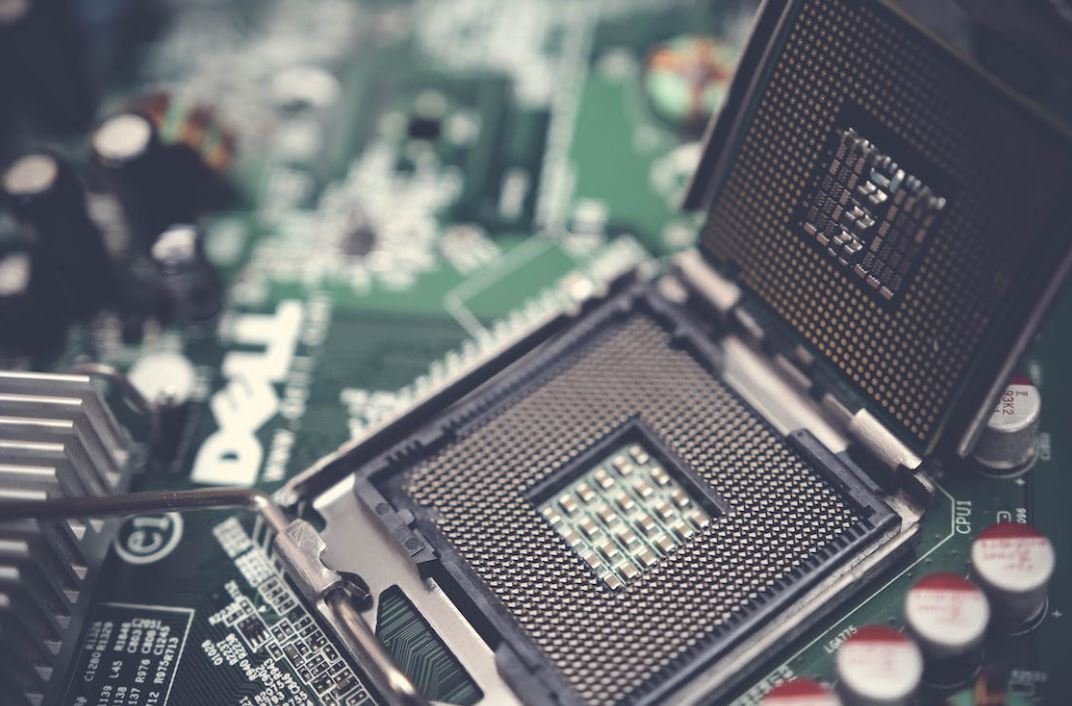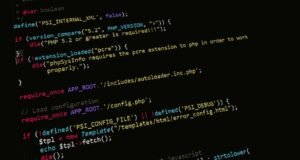Neural Networks Wikipedia
A neural network is a complex computational model inspired by the way the human brain works. It consists of interconnected nodes, or neurons, arranged in layers to process and analyze data. Neural networks are widely used in artificial intelligence and machine learning applications, enabling computers to learn from and make predictions or decisions based on large sets of data.
Key Takeaways:
- A neural network is a computational model inspired by the human brain.
- The network consists of interconnected neurons organized in layers.
- Neural networks are used for data analysis, prediction, and decision-making.
- They are a fundamental component of artificial intelligence and machine learning.
**Neural networks** are composed of layers of interconnected **neurons** that process and analyze data. Each neuron takes input values, performs calculations using internal weights, and outputs the result.
*These weights are adjusted during a process called **training**, which enables the network to learn patterns and make accurate predictions.*
The first layer of a neural network, known as the **input layer**, receives the initial data. Subsequent layers, called **hidden layers**, perform intermediate computations to extract features from the input. Finally, the **output layer** produces the network’s prediction or decision.
*Neural networks are powerful tools for **pattern recognition** and are capable of solving complex problems, such as image and speech recognition.*
Types of Neural Networks
There are several types of neural networks, each designed to solve specific problems. Some popular types include:
- **Feedforward Neural Networks**: These networks transmit data in a single direction, from the input layer to the output layer, without any feedback.
- **Recurrent Neural Networks**: In these networks, information can flow in cycles, allowing the network to process sequential or time-dependent data.
- **Convolutional Neural Networks**: These networks are specifically designed to process grid-like data, such as images, by applying convolutional filters to extract features.
- **Generative Adversarial Networks**: This type consists of two networks working against each other, where one network generates content and the other network discriminates between real and generated data.
Advantages and Applications
The benefits of using neural networks include:
- **Parallel Processing**: Neural networks can process multiple inputs simultaneously, making them faster compared to traditional algorithms.
- **Adaptability**: They can adapt and learn from new data without the need for manual reprogramming.
- **Robustness**: Neural networks are resistant to noise and can still produce accurate results even in the presence of data inconsistencies.
*One interesting application of neural networks is in self-driving cars, where they are used for object recognition and decision-making in real-time.*
Neural Network Limitations
While neural networks have many advantages, they also have some limitations:
- The training process can be time-consuming, especially for large and complex networks.
- **Overfitting** can occur, where the network memorizes the training data but fails to generalize well to new, unseen data.
- **High computational power** and **significant memory requirements** may be needed for training and deploying the network.
Data Points
| Year | Paper | Significance |
|---|---|---|
| 1943 | ||
| 1958 |
Types of Layers
| Layer Type | Description |
|---|---|
| Input Layer | |
| Hidden Layer |
Neural networks have revolutionized various fields, including *finance, healthcare, and natural language processing*.
Future of Neural Networks
As technology advances, neural networks are expected to continue evolving and finding applications in new areas. With ongoing research and development, we can anticipate more efficient and powerful neural network models in the future.
*In the coming years, neural networks have the potential to revolutionize industries like transportation, manufacturing, and entertainment.*

Common Misconceptions
Neural Networks are Only Used for Artificial Intelligence
One common misconception about neural networks is that they are only used for artificial intelligence (AI) applications. While it is true that neural networks play a vital role in AI, they are also used in various other fields. Some of the key areas where neural networks are applied include:
- Predictive analytics in finance and economics
- Pattern recognition in image and speech processing
- Medical diagnosis and patient prognosis
Neural Networks Can Learn Anything Without Human Intervention
Contrary to popular belief, neural networks do not possess a limitless capacity to learn without any human intervention. While their ability to learn is impressive, they require training data and human supervision to learn effectively. Some common examples of human intervention in neural networks include:
- Data preprocessing to remove noise and outliers
- Hyperparameter tuning for optimizing network performance
- Training data labeling for supervised learning
Neural Networks are Only Composed of Neurons
Although they are called neural networks, these networks are not exclusively composed of neurons. In addition to neurons, neural networks consist of various other components that contribute to their functioning. Here are a few key elements of a neural network:
- Layers of neurons (input, hidden, output)
- Connections (weights) between neurons
- Activation functions that determine the output of neurons
Neural Networks are Always Deep Learning Models
Another common misconception is that neural networks are synonymous with deep learning models. While deep learning is a subfield of machine learning that involves neural networks with multiple layers, not all neural networks are deep learning models. In fact, there are different types of neural networks, such as:
- Feedforward neural networks
- Recurrent neural networks
- Convolutional neural networks
Neural Networks are Only Accurate and Perfect
Despite their impressive capabilities, neural networks are not infallible and can make mistakes. Their accuracy depends on various factors, such as the quality and quantity of training data, network architecture, and hyperparameter settings. It is important to validate and test neural networks thoroughly to understand their limitations. Some potential limitations and challenges of neural networks include:
- Overfitting, where the network becomes too specialized on the training data
- Generalization issues, where the network fails to generalize well to unseen data
- Interpretability challenges, making it difficult to understand the decision-making process

The History of Neural Networks
Neural networks, also known as artificial neural networks (ANNs), are computational models inspired by the human brain. They have gained significant attention in recent years due to their ability to learn and make predictions. The history of neural networks dates back to the 1940s when the concept was first introduced. The following table presents important milestones in the development of neural networks.
| Year | Development |
|---|---|
| 1943 | Warren McCulloch and Walter Pitts propose the first artificial neuron model. |
| 1951 | Donald Hebb suggests the Hebbian theory, a fundamental principle for learning in neural networks. |
| 1957 | Frank Rosenblatt develops the perceptron, an early type of neural network, capable of learning simple patterns. |
| 1986 | Geoffrey Hinton, David Rumelhart, and Ronald Williams pioneer the backpropagation algorithm for training multi-layer neural networks. |
| 2012 | Deep neural networks achieve breakthrough results in image classification. |
| 2015 | AlphaGo defeats a human champion in the game of Go, showcasing the power of neural networks. |
Applications of Neural Networks
Neural networks have found applications in various fields, ranging from healthcare to finance. The following table highlights some prominent application areas along with their respective examples.
| Application Area | Examples |
|---|---|
| Image Recognition | Facial recognition, object detection, autonomous driving |
| Natural Language Processing | Text sentiment analysis, machine translation, chatbots |
| Healthcare | Disease diagnosis, drug discovery, medical image analysis |
| Finance | Stock market prediction, fraud detection, credit scoring |
| Robotics | Autonomous robots, robotic vision, motion planning |
Advantages and Disadvantages of Neural Networks
Like any technology, neural networks come with their own set of advantages and disadvantages. The table below outlines some key aspects for consideration.
| Advantages | Disadvantages |
|---|---|
| Ability to learn from large datasets | Complexity and lack of interpretability |
| Adaptability to diverse problem domains | Require significant computational resources |
| Capability to handle noisy or incomplete data | Difficulty in training and fine-tuning |
| Parallel processing for faster computations | Risk of overfitting and generalization issues |
Neural Networks and Their Components
A neural network consists of various interconnected components, each playing a vital role. In the next table, we explore these components in detail.
| Component | Function |
|---|---|
| Input Layer | Receives input data and passes it to the network |
| Hidden Layers | Process the input data through a series of transformations |
| Weights | Numeric values determining the strength of connections |
| Activation Function | Introduces non-linearity and affects output |
| Output Layer | Produces the final output or prediction |
Common Activation Functions in Neural Networks
The choice of activation function greatly influences the behavior and performance of a neural network. Here we present a table of common activation functions and their distinctive properties.
| Activation Function | Range | Properties |
|---|---|---|
| Sigmoid | (0, 1) | Smooth, squashes input values into a probability-like range |
| ReLU | [0, ∞) | Fast computation, avoids vanishing gradient problem |
| Tanh | (-1, 1) | Similar to sigmoid, but symmetric around the origin |
| Softmax | (0, 1) | Used for multi-class classification, outputs normalized probabilities |
Training and Testing in Neural Networks
Training and testing are crucial stages in the development of a neural network. The following table explores the differences between these phases.
| Phase | Objective | Data |
|---|---|---|
| Training | Optimize the network’s weights and biases | Annotated data, labels, and expected outputs |
| Testing | Evaluate the network’s performance and generalization | Unseen data without labels for predictions |
Current Trends and Future Directions in Neural Networks
The field of neural networks is continuously evolving with new trends and directions emerging. Stay up to date with the following table showcasing current trends and future possibilities.
| Trend/Direction | Description |
|---|---|
| Deep Learning | Expanding the network depth for improved representation and abstraction |
| Reinforcement Learning | Training networks through interaction with dynamic environments |
| Explainable AI | Enhancing interpretability and transparency of neural networks |
| Neuromorphic Computing | Developing hardware mimicking biological neural networks for efficient processing |
Conclusion
Neural networks have come a long way since their inception, revolutionizing various industries and enabling remarkable advancements in artificial intelligence. With their ability to learn from data and make complex predictions, neural networks continue to shape our present and hold immense potential for the future.
Frequently Asked Questions
What are neural networks?
Neural networks are computational models inspired by the structure and functioning of the human brain. They consist of interconnected nodes, or artificial neurons, that process and transmit information. These networks are capable of learning and making decisions based on input data.
How do neural networks work?
Neural networks work by receiving input data, processing it through multiple layers of interconnected nodes, and producing output. Each node in a network performs a weighted calculation on its inputs and applies an activation function to determine its output. This process, known as forward propagation, enables the network to make predictions or classify data.
What are the applications of neural networks?
Neural networks have a wide range of applications across various fields. They are extensively used in image and speech recognition, natural language processing, autonomous driving, financial forecasting, and many other areas where pattern recognition and predictions are required.
What is deep learning?
Deep learning is a subset of machine learning that utilizes neural networks with multiple layers. These deep neural networks can learn from large amounts of unlabeled data and extract hierarchical representations of features. Deep learning has revolutionized fields such as computer vision and natural language processing.
What is training in neural networks?
Training in neural networks refers to the process of adjusting the weights and biases of the network’s nodes to optimize its performance. During training, the network is presented with a set of known inputs, and its outputs are compared to the desired outputs. By iteratively adjusting the weights through techniques like backpropagation, the network gradually learns to improve its predictions.
What is overfitting in neural networks?
Overfitting occurs in neural networks when the model performs well on the training data but fails to generalize to new, unseen data. This happens when the network becomes too complex or when it is trained on limited data. Overfitting can be mitigated by techniques like regularization, cross-validation, and early stopping.
What is underfitting in neural networks?
Underfitting happens when a neural network fails to capture the patterns in the training data, resulting in poor performance on both the training and test data. Underfitting may occur when the network is not capable of representing the complexity of the underlying data. It can be addressed by increasing the network’s capacity or improving the quality and quantity of the training data.
What are convolutional neural networks (CNNs)?
Convolutional neural networks, or CNNs, are a type of neural network specifically designed for image and video processing tasks. They leverage convolutional layers, pooling layers, and fully connected layers to automatically learn hierarchies of spatial features from visual data. CNNs have proven highly effective in tasks such as object recognition and image classification.
What are recurrent neural networks (RNNs)?
Recurrent neural networks, or RNNs, are a class of neural networks designed to handle sequential and time-dependent data. Unlike traditional feedforward networks, RNNs have recurrent connections that allow them to maintain internal states and process input sequences of variable length. RNNs are widely used in tasks such as language modeling, speech recognition, and machine translation.
Are neural networks similar to the human brain?
While neural networks are inspired by the structure and functioning of the human brain, they are still highly simplified compared to the brain’s complexity. Neural networks do not fully capture the intricacies of biological neurons and the brain’s neural connections. However, they provide a powerful framework for solving complex computational problems.




